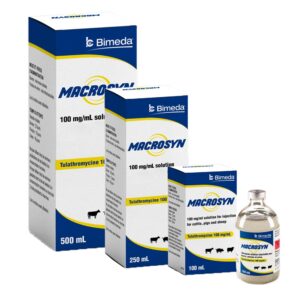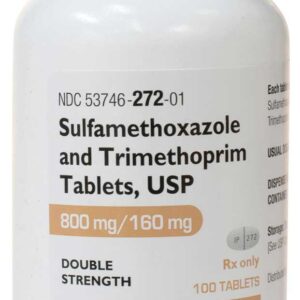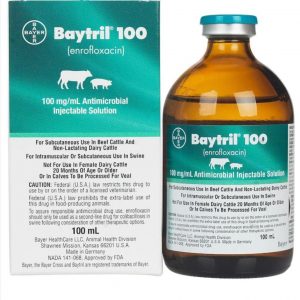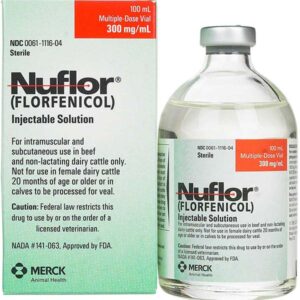Liquamycin LA-200 is intended for use in the treatment of disease due to oxytetracycline-susceptible organisms in beef cattle; dairy cattle; calves, including preruminating (veal) calves; and swine. A thoroughly cleaned, sterile needle and syringe should be used for each injection (needles and syringes may be sterilized by boiling in water for 15 minutes). In cold weather, Liquamycin LA-200 should be warmed to room temperature before administration to animals. Before withdrawing the solution from the bottle, disinfect the rubber cap on the bottle with suitable disinfectant, such as 70% alcohol.
The injection site should be similarly cleaned with the disinfectant. Needles of 16–18 gauge and 1–1½ inches long are adequate for intramuscular and subcutaneous injections. Needles 2–3 inches are recommended for intravenous use.
Intramuscular Administration
Intramuscular injections should be made by directing the needle of suitable gauge and length into the fleshy part of a thick muscle in the neck region; avoid blood vessels and major nerves. Before injecting the solution, pull back gently on the plunger. If blood appears in the syringe, a blood vessel has been entered; withdraw the needle and select a different site. In cattle, intramuscular administration is not recommended according to Beef Quality Assurance Guidelines. No more than 10 mL should be injected intramuscularly at any one site in adult beef and dairy cattle, and not more than 5 mL per site in adult swine; rotate injection sites for each succeeding treatment. The volume administered per injection site should be reduced according to age and body size so that 1-2 mL per site is injected in small calves.
Subcutaneous Administration
Subcutaneous injections in beef cattle, dairy cattle, and calves, including preruminating (veal) calves, should be made by directing the needle of suitable gauge and length through the loose folds of the neck skin in front of the shoulder. Care should be taken to ensure that the tip of the needle has penetrated the skin but is not lodged in muscle. Before injecting the solution, pull back gently on the plunger. If blood appears in the syringe, a blood vessel has been entered; withdraw the needle and select a different site. The solution should be injected slowly into the area between the skin and muscles. No more than 10 mL should be injected subcutaneously at any one site in adult beef and dairy cattle; rotate injection sites for each succeeding treatment. The volume administered per injection site should be reduced according to age and body size so that 1–2 mL per site is injected in small calves.
Intravenous Administration
Liquamycin LA-200 may be administered intravenously to beef and dairy cattle. As with all highly concentrated materials, Liquamycin LA-200 should be administered slowly by the intravenous route.
Preparation of the Animal for Injection
- Approximate location of vein. The jugular vein runs in the jugular groove on each side of the neck from the angle of the jaw to just above the brisket and slightly above and to the side of the windpipe (see Fig. I).
- Restraint. A stanchion or chute is ideal for restraining the animal. With a halter, rope, or cattle leader (nose tongs), pull the animal’s head around the side of the stanchion, cattle chute, or post in such a manner to form a bow in the neck (see Fig. II), then snub the head securely to prevent movement. By forming the bow in the neck, the outside curvature of the bow tends to expose the jugular vein and make it easily accessible.
Caution: Avoid restraining the animal with a tight rope or halter around the throat or upper neck which might impede blood flow. Animals that are down present no problem so far as restraint is concerned. - Clip hair in area where injection is to be made (over the vein in the upper third of the neck). Clean and disinfect the skin with alcohol or other suitable antiseptic.
INDICATIONS
Liquamycin LA-200 is intended for use in the treatment of the following diseases in beef cattle; dairy cattle; calves, including preruminating (veal) calves; and swine when due to oxytetracycline-susceptible organisms:
Cattle
Liquamycin LA-200 is indicated in the treatment of pneumonia and shipping fever complex associated with Pasteurella spp. and Hemophilus spp.; infectious bovine keratoconjunctivitis (pinkeye) caused by Moraxella bovis; foot rot and diphtheria caused by Fusobacterium necrophorum; bacterial enteritis (scours) caused by Escherichia coli; wooden tongue caused by Actinobacillus lignieresii; leptospirosis caused by Leptospira pomona; anaplasmosis caused by Anaplasma marginale; anthrax caused by Bacillus anthracis; and wound infections and acute metritis caused by strains of staphylococci and streptococci organisms sensitive to oxytetracycline.
Swine
Liquamycin LA-200 is indicated in the treatment of bacterial enteritis (scours, colibacillosis) caused by Escherichia coli; pneumonia caused by Pasteurella multocida; and leptospirosis caused by Leptospira pomona.
In sows, Liquamycin LA-200 is indicated as an aid in the control of infectious enteritis (baby pig scours, colibacillosis) in suckling pigs caused by Escherichia coli.
DOSAGE
Cattle
Liquamycin LA-200 is to be administered by intramuscular, subcutaneous, or intravenous injection. Intramuscular administration is not recommended according to Beef Quality Assurance Guidelines.
A single dose of 9 mg of oxytetracycline per lb of body weight administered intramuscularly or subcutaneously is recommended in the treatment of infectious bovine keratoconjunctivitis (pinkeye) caused by Moraxella bovis; and in the treatment of the following conditions where retreatment is impractical due to husbandry conditions, such as cattle on range, or where their repeated restraint is inadvisable: bacterial pneumonia caused by Pasteurella spp. (shipping fever) in calves and yearlings, and anaplasmosis caused by Anaplasma marginale.
Liquamycin LA-200 can also be administered by intravenous, subcutaneous, or intramuscular injection at a level of 3–5 mg of oxytetracycline per lb of body weight per day.
In the treatment of severe foot rot and advanced cases of other indicated diseases, a dosage level of 5 mg/lb of body weight per day is recommended. Treatment should be continued 24–48 hours following remission of disease signs; however, not to exceed a total of 4 consecutive days. Consult your veterinarian if improvement is not noted within 24–48 hours of the beginning of treatment.
Swine
A single dosage of 9 mg of Liquamycin LA-200 per lb of body weight administered intramuscularly in the neck region is recommended in the treatment of bacterial pneumonia caused by Pasteurella multocida in swine, where retreatment is impractical due to husbandry conditions or where repeated restraint is inadvisable.
Liquamycin LA-200 can also be administered by intramuscular injection at a level of 3–5 mg of oxytetracycline per lb of body weight per day. Treatment should be continued 24–48 hours following remission of disease signs; however, not to exceed a total of 4 consecutive days. Consult your veterinarian if improvement is not noted within 24–48 hours of the beginning of treatment.
For sows, administer once intramuscularly in the neck region 3 mg of oxytetracycline per lb of body weight approximately 8 hours before farrowing or immediately after completion of farrowing.
For swine weighing 25 lb of body weight and under, Liquamycin LA-200 should be administered undiluted for treatment at 9 mg/lb but should be administered diluted for treatment at 3 or 5 mg/lb.
PRECAUTIONS
Exceeding the highest recommended level of drug per lb of body weight per day, administering more than the recommended number of treatments, and/or exceeding 10 mL intramuscularly or subcutaneously per injection site in adult beef and dairy cattle, and 5 mL intramuscularly per injection site in adult swine, may result in antibiotic residues beyond the withdrawal period.
At the first sign of any adverse reaction, discontinue use of the product and seek the advice of your veterinarian. Some of the reactions may be attributed either to anaphylaxis (an allergic reaction) or to cardiovascular collapse of unknown cause.
Shortly after injection, treated animals may have transient hemoglobinuria resulting in darkened urine.
As with all antibiotic preparations, use of this drug may result in overgrowth of nonsusceptible organisms, including fungi. A lack of response by the treated animal, or the development of new signs, may suggest that an overgrowth of nonsusceptible organisms has occurred. If any of these conditions occur, consult your veterinarian.
Since bacteriostatic drugs may interfere with the bactericidal action of penicillin, it is advisable to avoid giving Liquamycin LA-200 in conjunction with penicillin.
STORAGE
Store at room temperature 15°– 30°C (59°– 86°F).
Protect from freezing. Use within 28 days of first vial puncture. Stopper may be punctured a maximum of 40 times.







Reviews
There are no reviews yet.